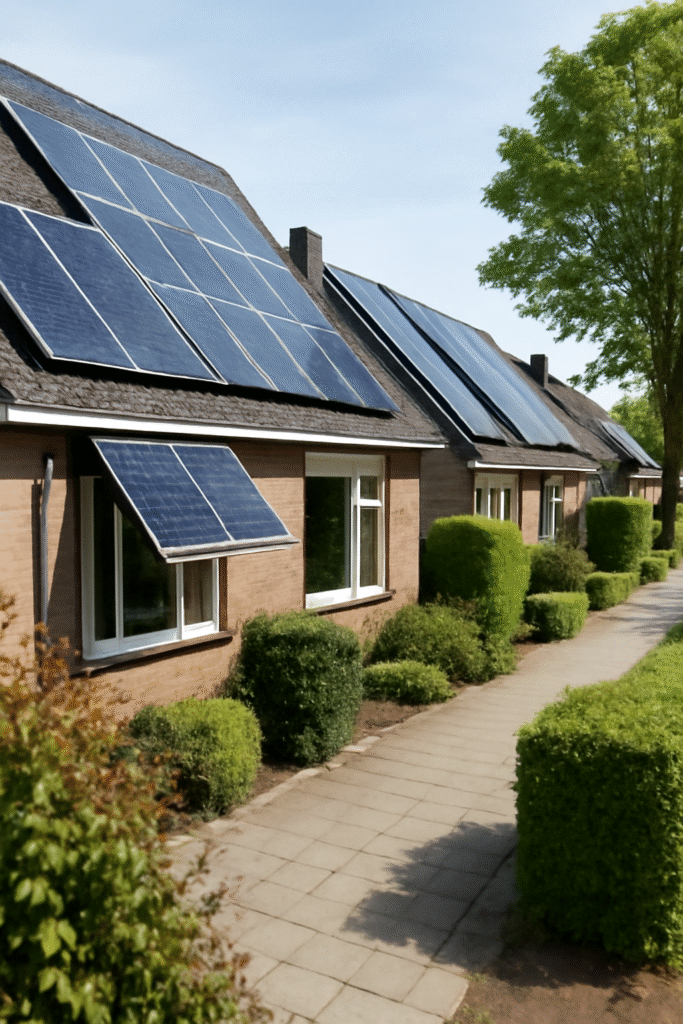Inovações simples e sustentáveis que qualquer pessoa pode entender.
Quando as pessoas ouvem a expressão “tecnologia verde”, muitas imaginam fazendas solares que se estendem até o horizonte, frotas de carros elétricos futuristas ou usinas de reciclagem de alta tecnologia cheias de máquinas.
Isso tudo faz parte da solução — mas a verdadeira revolução verde começa muito mais perto de casa.
Ela começa com pequenas escolhas, ferramentas simples e novos hábitos que adotamos todos os dias.
Impacto real não depende de ser cientista ou ter um grande orçamento; depende de consciência e ação.
Este guia é um convite para reimaginar o que a tecnologia sustentável realmente significa, lembrando que a inovação não está distante — ela já está em nossas mãos.
1. Pequenas ações, grandes diferenças: hábitos sustentáveis no dia a dia

2. Tecnologia Verde Acessível: Ferramentas do Dia a Dia para um Futuro Melhor
A sustentabilidade nasce da consciência. Muitas “tecnologias verdes” não são nada futuristas — são práticas que usam melhor os recursos e a energia.
Eficiência Energética em Casa
Iluminação LED:
Trocar lâmpadas antigas por LEDs é um passo simples, mas poderoso. LEDs consomem até 80% menos energia, duram muito mais e reduzem tanto a conta de luz quanto a necessidade de substituições frequentes.
Eletrodomésticos Eficientes:
Ao atualizar equipamentos, procure selos de eficiência (como “A” ou “Energy Star”). Ao longo da vida útil, aparelhos eficientes economizam energia e dinheiro.
Desconectar Dispositivos:
Muitos eletrônicos consomem energia “fantasma” mesmo desligados. Desconecte-os ou use réguas com interruptor para cortar esse desperdício invisível.
Aquecimento e Resfriamento Conscientes:
Mantenha o ar-condicionado e o aquecedor em temperaturas moderadas e limpe os filtros regularmente para maximizar a eficiência.
Gestão Inteligente de Resíduos
Compostagem Doméstica:
Com um pequeno compositeiro, restos de cozinha viram adubos ricos em nutrientes em vez de irem para aterros. Modelos compactos funcionam até em apartamentos.
Reciclagem Correta:
Aprenda a separar resíduos por material — plástico, papel, vidro, metal. Pontos de coleta locais ou programas municipais facilitam a participação.
Consumir Menos:
A melhor “tecnologia verde” é não gerar lixo. Comprar menos itens descartáveis, preferir produtos duráveis e adquirir alimentos a granel reduz o desperdício na origem.
Mobilidade Sustentável
Bicicletas e Patinetes:
Para trajetos curtos, pedale ou deslize em vez de dirigir. É mais saudável, mais barato e não emite poluentes.
Carona e Aplicativos de Transporte:
Compartilhar trajetos ou usar transporte público reduz trânsito e poluição, ao mesmo tempo, em que economiza tempo e combustível.

Você não precisa de um kit de ferramentas de engenheiro para viver de forma sustentável. Muitas tecnologias acessíveis já estão disponíveis para lares comuns.
Energia Solar em Pequena Escala
Carregadores Solares Portáteis:
Painéis leves capazes de carregar celulares, tablets ou câmeras usando apenas a luz do sol — ideais para viagens ou para economizar energia no dia a dia.
Luzes Solares de Jardim:
Elas carregam durante o dia e iluminam a noite inteira, sem precisar de fios ou conexão com a rede elétrica.
Captação de Água da Chuva
Cisternas Compactas para Casa:
Pequenos reservatórios que coletam água da chuva para regar plantas, lavar o carro ou até abastecer o vaso sanitário. Em uma única estação, é possível economizar centenas de litros de água potável.
Apps e Ferramentas Digitais Sustentáveis
Aplicativos de Consumo Consciente:
Descubra quais marcas usam materiais sustentáveis ou métodos de produção ética. Alguns até acompanham sua pegada de carbono.
Plataformas de Doação e Troca:
Aplicativos para compartilhar, trocar ou doar itens prolongam a vida útil dos produtos e evitam que eles acabem em aterros sanitários.
Monitores de Consumo:
Dispositivos inteligentes medem, em tempo real, seu uso de água e energia, ajudando a identificar onde é possível economizar.
Poder Comunitário: Iniciativas Sustentáveis Locais

A sustentabilidade se multiplica quando é compartilhada. Participar — ou iniciar — projetos locais transforma esforço individual em transformação social.
Hortas Comunitárias e Urbanas:
Espaços verdes coletivos que aproximam vizinhos para cultivar alimentos orgânicos, restaurar a biodiversidade e se reconectar com a natureza.
Agricultura Apoiada pela Comunidade:
Grupos que compram diretamente de pequenos agricultores garantem comércio justo, produtos locais, menos embalagens e alimentos sazonais mais frescos.
Oficinas de Reparo e Reutilização:
Ambientes colaborativos onde as pessoas aprendem a consertar eletrodomésticos, roupas e móveis — um antídoto prático contra a cultura do descarte.
Bancos de Alimentos e Cozinhas Comunitárias:
Esses espaços coletam excedentes de mercados e lojas, reduzindo o desperdício enquanto alimentam pessoas em situação de necessidade.
O Futuro Sustentável Começa Aqui
Tecnologia verde e inovação sustentável não são conceitos distantes reservados a especialistas ou grandes empresas.
Elas são práticas, inclusivas e pensadas para qualquer pessoa disposta a agir com consciência.
De trocar uma única lâmpada a participar de uma horta comunitária, cada passo reformula nossa relação com o planeta.
Cada pequena mudança, cada recurso compartilhado, cada item consertado contribui para um tipo mais silencioso de revolução — uma revolução enraizada no cuidado.
A verdadeira sustentabilidade não depende de gadgets ou gestos grandiosos. Ela nasce quando a tecnologia se encaixa de forma natural no cotidiano, permitindo que vivamos de maneira mais leve, inteligente e conectada ao mundo ao nosso redor.
Qual hábito ou inovação mais fala ao seu coração — e o que você vai começar a experimentar hoje?
